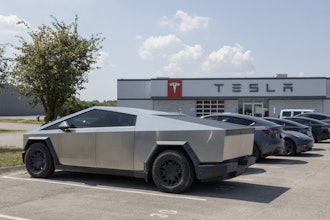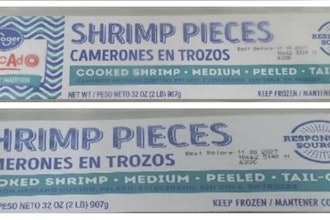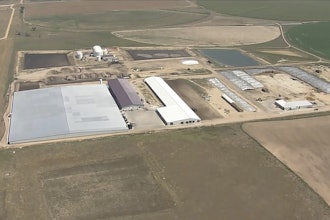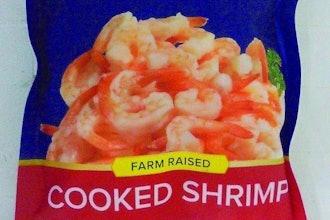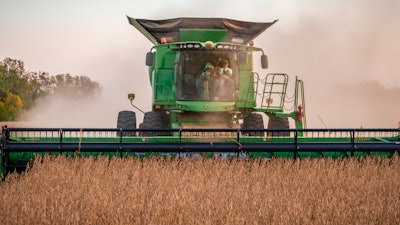
Decarbonizing agriculture is critical for the U.S. to reach net zero emissions by 2050. A new data-driven approach looks at practices that are good for the earth and profitable for farmers.
The world relies on American farmers to do much more than set its tables. In addition to producing food for people and animals, American farmers produce feedstocks for biofuel production.
In the process of doing this, the agricultural industry contributes about 10% of U.S. greenhouse gas (GHG) emissions. Because the amount of land dedicated for agriculture is limited, farmers need to find more ways to operate efficiently, sustainably and profitably while also reducing GHG emissions. With new practices, farmers can make farms a net sink of CO2, helping the U.S. reach its goal of achieving net zero emissions by 2050.
Sustainable intensification is a two-prong approach many think could help. It tries to optimize land use and management practices for maximum farmland productivity at the same time it tries to minimize associated environmental impact. The trick is finding the right balance between the two objectives.
Scientists who specialize in agroecosystems modeling and life-cycle analysis (LCA) from Colorado State University (CSU) and the U.S. Department of Energy’s (DOE) Argonne National Laboratory took a new analytic approach to the issue in a recent study of corn and soy farming in Iowa. They co-authored an article, “A multi-product landscape life-cycle assessment approach for evaluating local climate mitigation potential,” in the June 20 issue of the Journal of Cleaner Production.
“The concept of sustainable intensification of farming was applied into more broadscale landscape application,” said one of the article’s co-authors, Hoyoung Kwon, a principal environmental scientist in Argonne’s Energy Systems and Infrastructure Analysis (ESIA) division. “We considered productivity and GHG emissions, attempted to optimize land management tactics and products, and investigated different trade-offs that improve the land and land productivity.”
For example, farmers can clear and repurpose corn crop residue (or “stover”) for biofuel, but a percentage of stover can remain in the soil for valuable nutrient and carbon sources for future crops. Farmers can plant cover crops during the winter (or “fallow”) season, to supplement removed stover. The authors took into account energy, which has an emissions cost of planting of cover crops to holistically address net benefits of stover removal and cover crop planting. Farmers can also reduce how much land they till after a growing season ends, which lessens decay and reduces the amount of CO2 that emanates from the soil. However, the farmer has to till some of the land to be ready for the next growing season.
While some farmers already follow one or even all three of these practices, the scientists from Argonne believe a better understanding of their impact will motivate more to do so, for real benefit.
“Our approach gives a holistic perspective and looks at the perspective of the farmer: What are all the products that can be produced on the land and what are the sustainability benefits?” said co-author Troy Hawkins, group leader of fuels and products in Argonne’s ESIA division. “Farming can be a risky, low-margin exercise. Profitability will always be a primary focus. However, sustainability has value that may be unrecognized. How can we put all that together with changes to land management practices to make farming more sustainable and improve farmers’ costs?”
The scientists looked at the trade-offs and synergies between sustainable intensification and carbon-sequestering conservation measures in a real-world scenario. They used two models — DayCent and the Greenhouse Gases, Regulated Emissions, and Energy Use in Technologies (GREET) LCA — to evaluate a farming area upstream of Des Moines, Iowa.
The DayCent model represents daily flows of carbon, nitrogen and water between the atmosphere, vegetation and soil in natural and agricultural ecosystems. The scientists relied on it to evaluate GHG emissions in corn ethanol production and the effects of residue harvest.
They used GREET to account for emissions associated with farm operations and the use of harvested corn grain, soybean and corn stover as feedstocks for biofuel production. GREET is widely used across industries to evaluate energy consumption, GHG emissions, air pollutant emissions and water consumption associated with biofuel supply chains and other transport and energy technologies. Fellow co-author Michael Wang, Argonne’s interim division director for energy systems and Infrastructure, is a primary architect of GREET.
According to the study, harvesting 30% of the corn stover for biofuel production would increase farm revenues, double net profitability and increase overall biofuel production from the landscape by 17–20%. Removal of the stover would also mitigate GHGs somewhat, but it reduced the baseline amount of good carbon in the soil by 40%. In comparison, integrated approaches that include winter cover cropping and/or tillage intensity reduction would increase carbon in the soil, improve farm profitability and mitigate more GHGs.
“We focused on corn and soy but our approach could be extended to other crops,” said Hawkins. “Many farms today are large, industrial farms that are high-tech and rely much more on high resolution data. We want to give farmers, regional planners and others in agricultural management a tool to calculate how to use land sustainably and get the most value out of the land. This will further both profitability and environmental goals.”
The work was supported, in part, by DOE’s Bioenergy Technologies Office within the Office of Energy Efficiency and Renewable Energy.
















